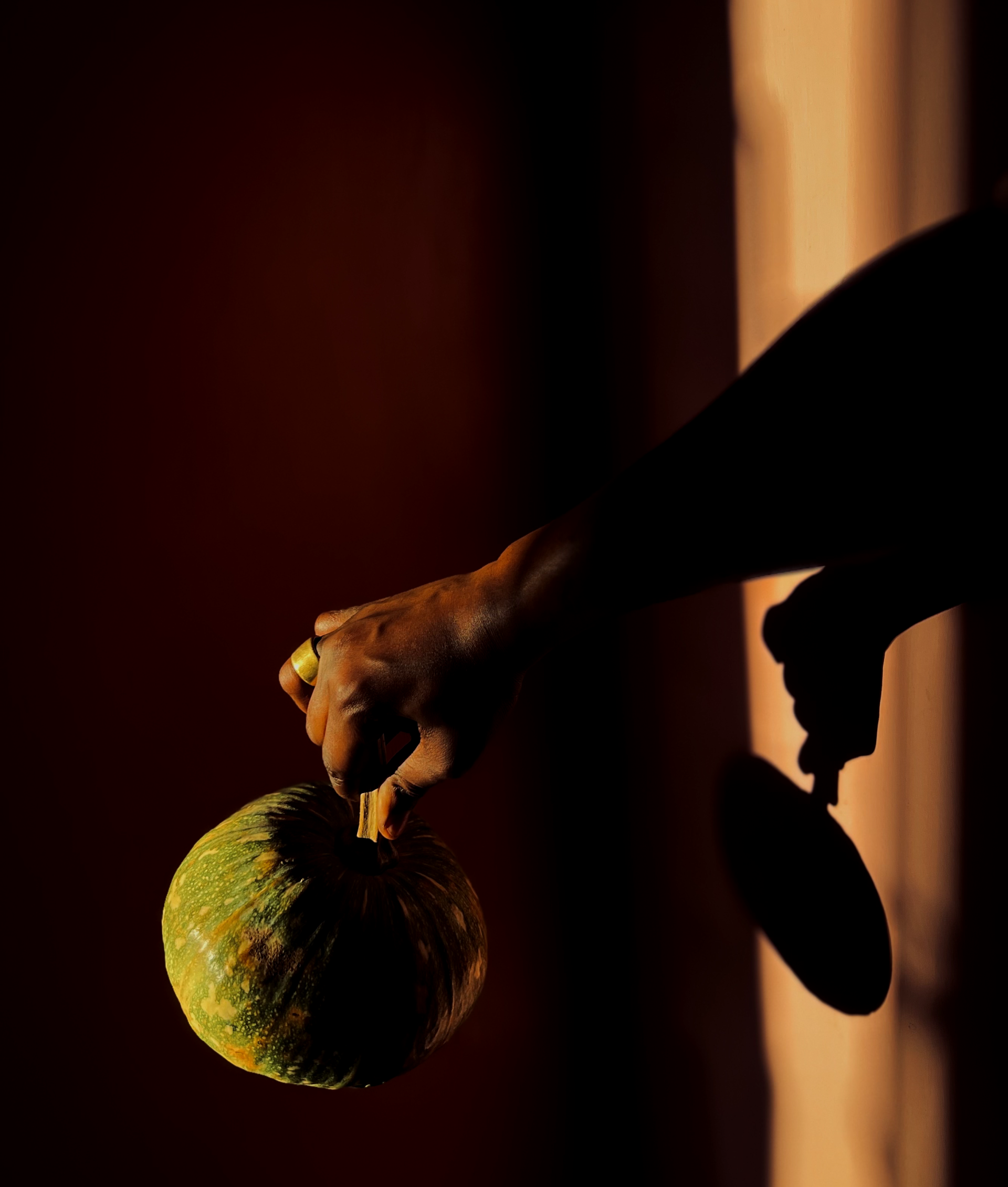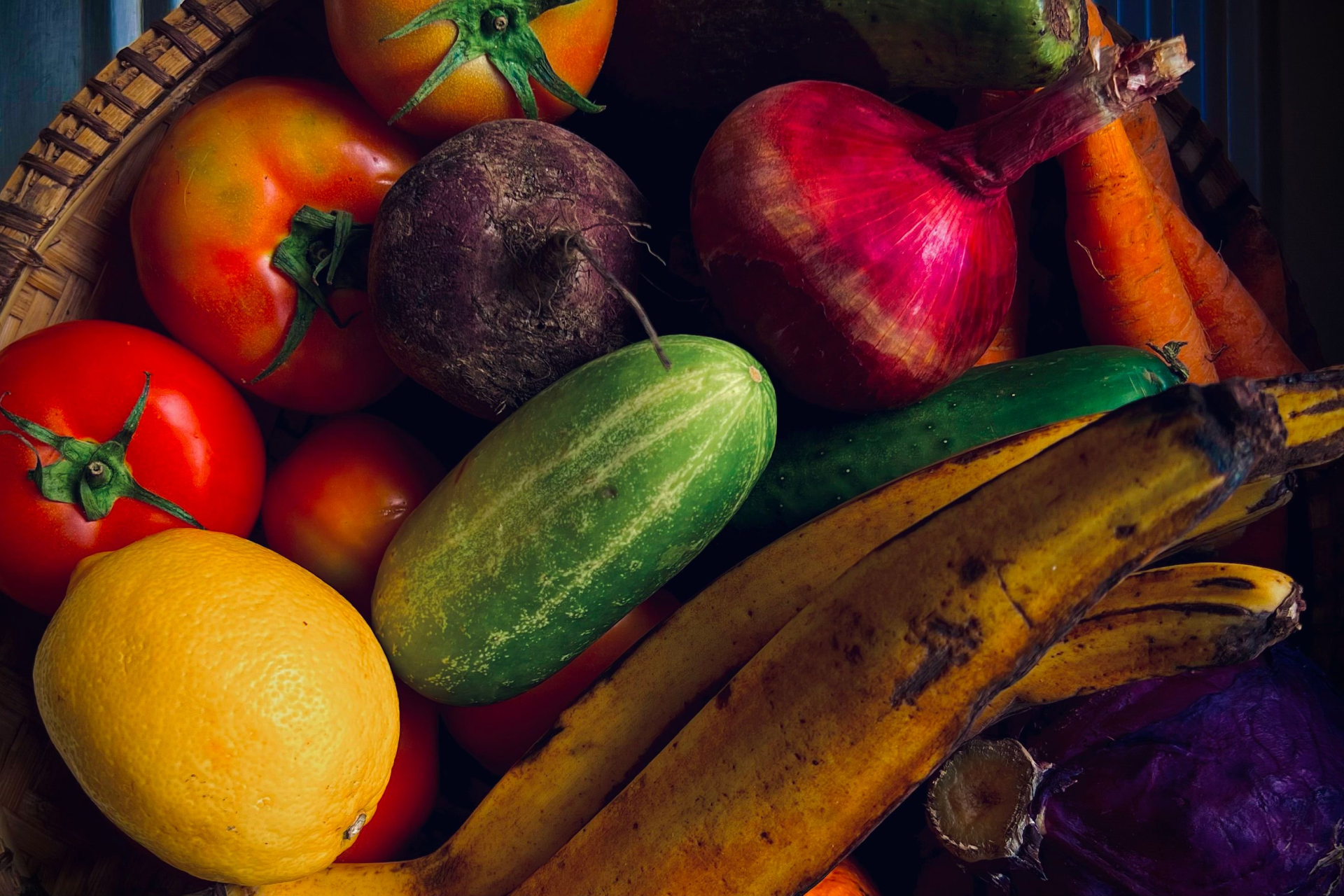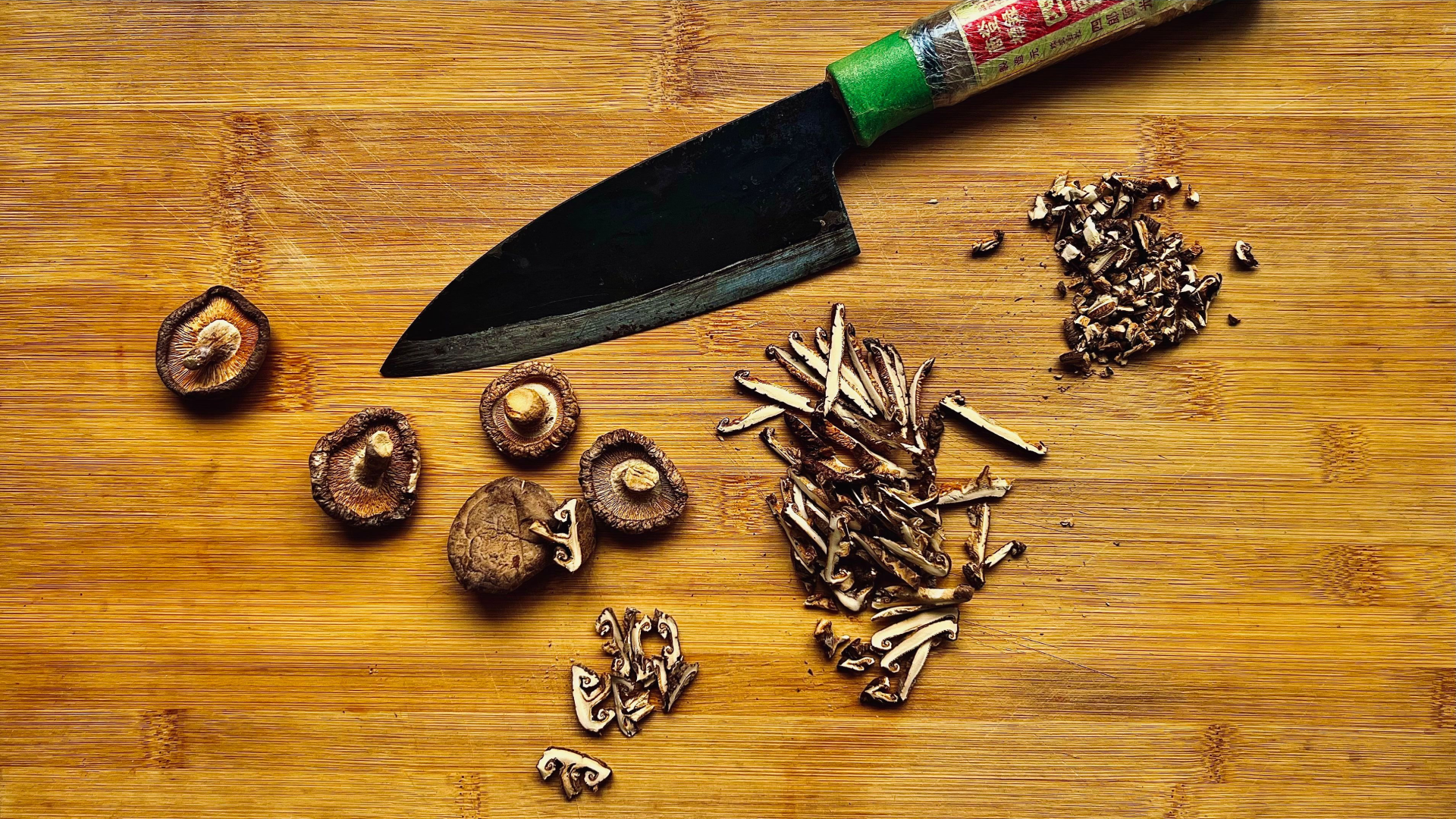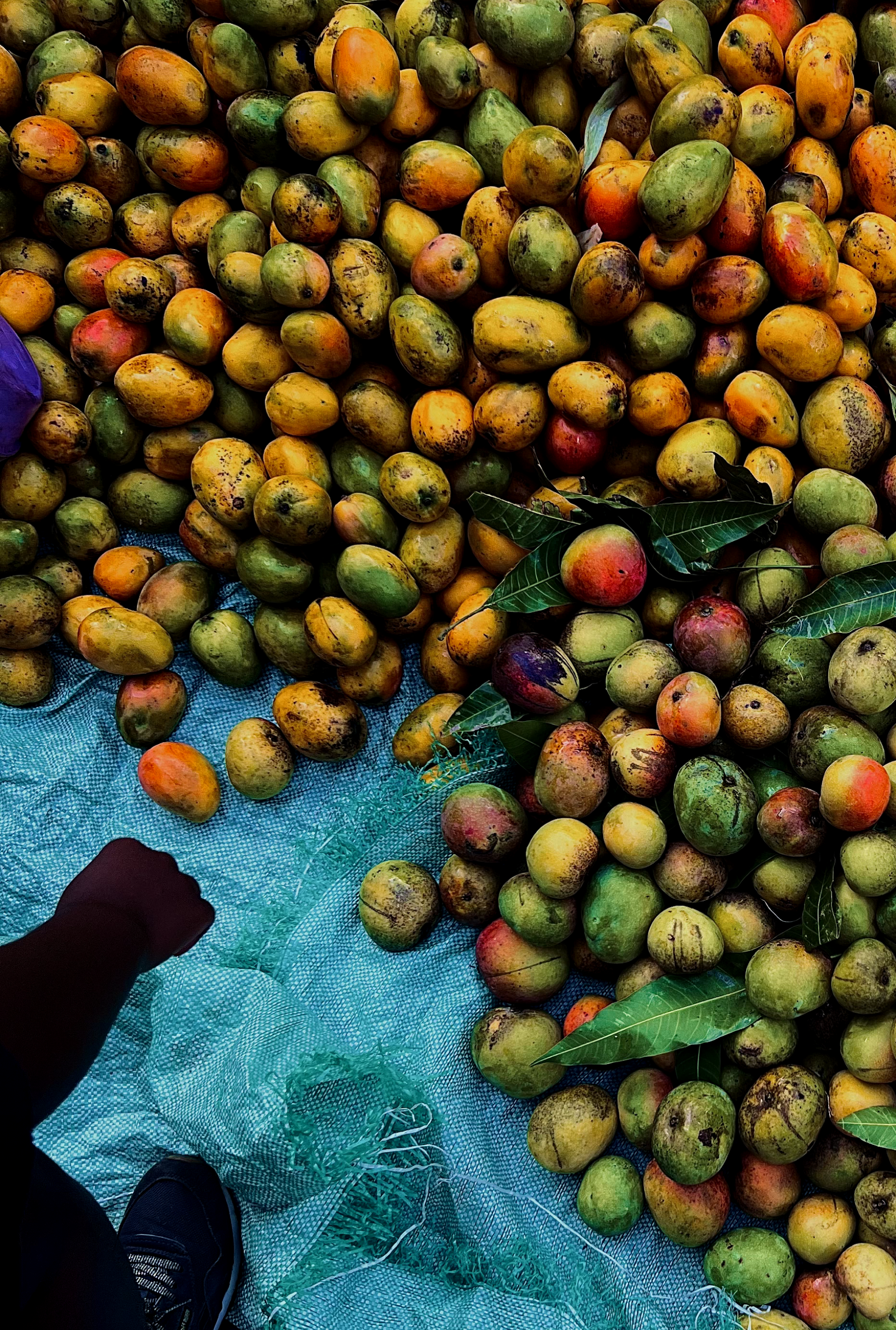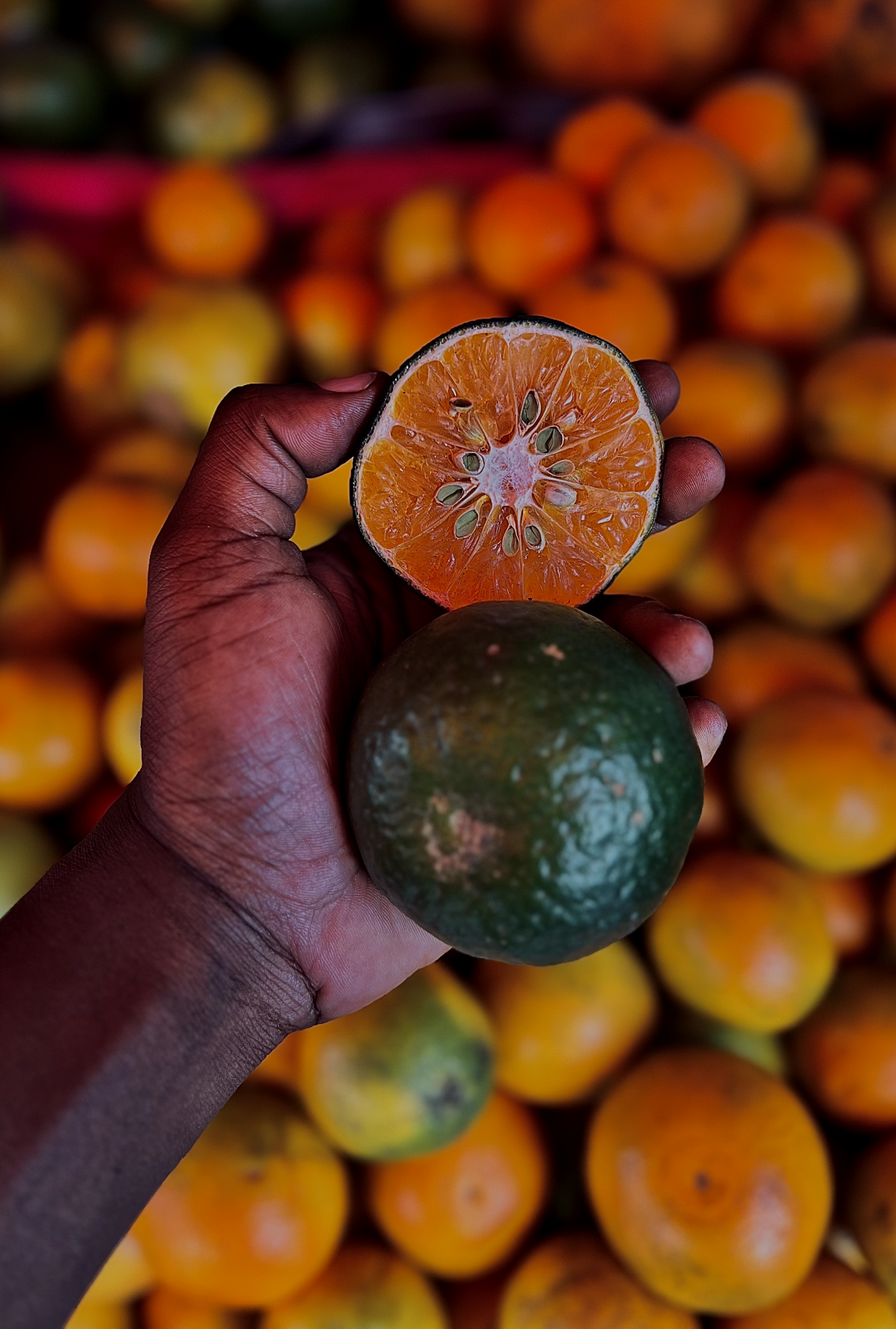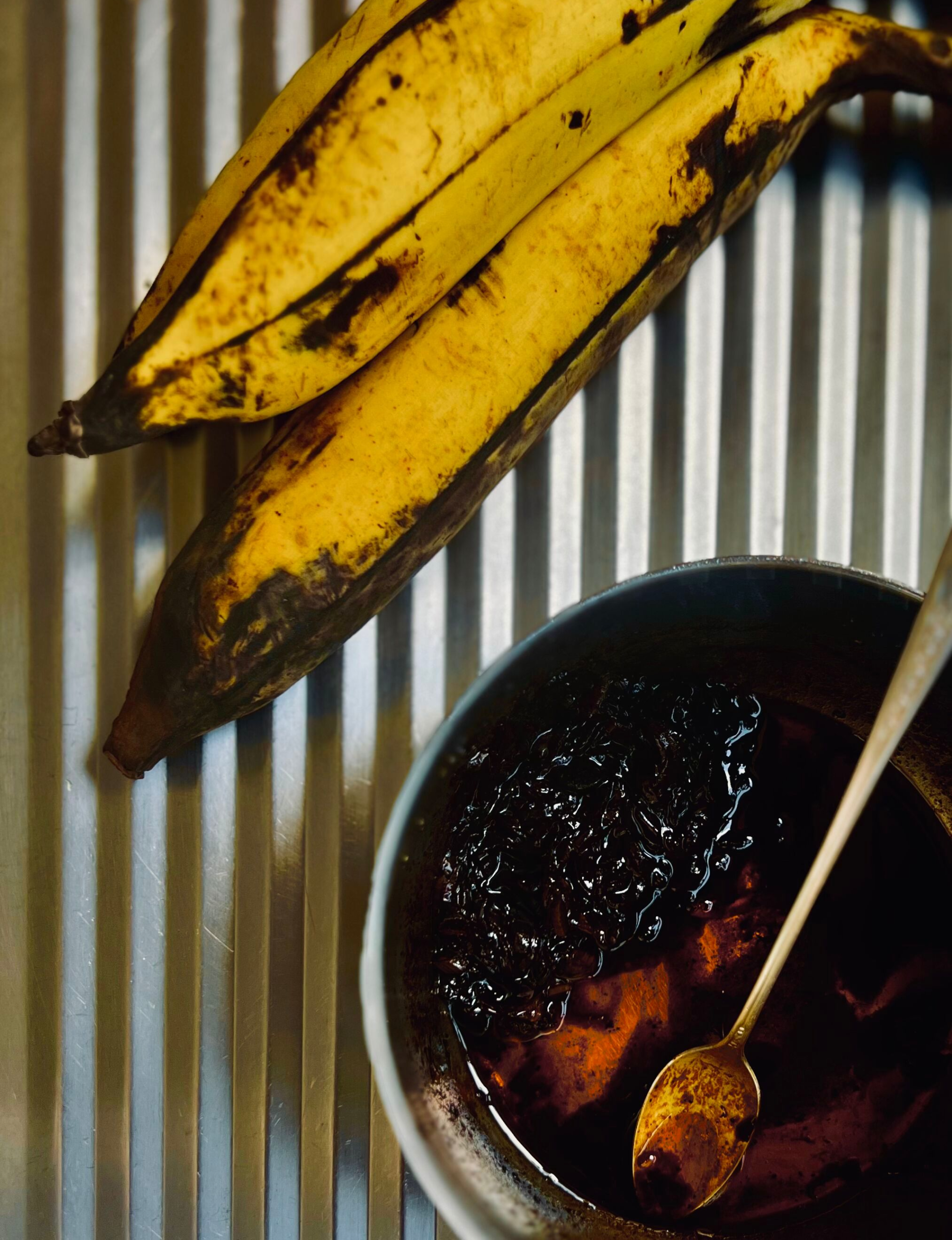
IBU
Dreaming of (n)ice cream with feel-seeker Joshua Obaga and his Ibu Flavour Co.
Poems and photography
JOSHUA OBAGA
Words
HELEN JENNINGS
Imagine it’s a hot day and you’re pressing your tongue to a scoop of delectable ice cream. Life is good as warm notes of areca nut, clove and fennel seeds flood your senses. Swap scoops and now you’re experiencing the reassuring aroma of roasted plantain and Biscoff. Swap again and you’re awoken by an umami hit of miso and groundnuts, or even soy sauce. Want in? Well, join the right Whatsapp group, or head to the best cultural events in Nairobi, and your tastebuds will be rewarded with a soft serve from Ibu Flavour Co. The brain child of multidisciplinary creative Joshua Obaga, this deep dive into (n)ice cream is part of his quest to use organic, seasonal ingredients to develop plant-based confections that ask you to think differently about yourself and the world around you. Here, we discuss his expansive journey so far, and Obaga shares his poetic images and texts that reveal the sensorial alchemy that drives his practice.
“Ice cream is more than a flavour. It’s a narrative, a shared journey from earth to hand, from market to scoop”
When did you fall for food?
When I was very young, I remember my mother making chapatis and just seeing flour transforming into delicious bread did it for me. It was the same with photography, animation, writing and other creative processes I’ve explored. I just love having the ideas and ingredients and turning them into something. I ended up in advertising but after three years at Ogilvy Africa, I left in search of a new pursuit that would challenge people’s perspectives. I then spent many years researching food from haute cuisine and food tech to art and philosophy – ‘A day at ElBulli’ by Fernando Adrià Acosta became my bible. It freed my mind to think about how, through different processes, anything can be food. And studying ideas from around the world taught me to always start with who I am.
How did you settle on ice cream?
The 2020 lockdown came, I caught covid and had terrible fevers. During one fever dream I was an ice cream maker and when I woke up, it all made sense. Ice cream brings together food and design, high quality ingredients and storytelling. It’s a wonderfully blank canvas that’s accessible to all, plus it's great for my ADHD as I can make lots of different flavours but still stay within one universe. I spent my recovery making ice cream and Ibu has been evolving ever since.
How do you use ice cream as a conduit for storytelling?
Ibu means ‘mother’ in Malay, as in the source. And origins matter when I'm making this ice cream. The type of plant milk, the type of sugar, choice of fresh produce and making my own extracts and syrups. Each element tells a story. Is a certain commodity indigenous or was it brought to Kenya through colonialism? Which farm did it come from? How is it referred to locally? Then when people eat the ice cream, they’re enjoying a tasty treat but they’re also learning something. So, I'm grateful that I've been able to make my dream a reality. It's a figure of speech but it’s literally happened to me.
How do you go about sourcing your ingredients?
What I love about Nairobi is that it’s a melting pot so I can go to Indian, West African, Turkish, Japanese and Korean shops. It’s a very intense process of staring and smelling and looking and asking questions. At first the owners looked at me funny but now they’ve opened up. And in the markets, I’ve built relationships with most of the vendors so when selecting fruit and vegetables, I’ll touch and smell, and in some cases, I’ll listen to them, too. For me that connection to produce is vital. My family has a difficult history of farming in Kenya so I have respect for smallholder farmers.
What’s on the Ibu Library aka the menu?
I have 18 seasonal flavours, which are broken down into different palettes in the same way you have fragrance families (earthy, floral, woody etc). At events, I do a little exercise with people. Do they have a sweet tooth? Do they like spicy food? What’s their favourite cocktail? Then I make a recommendation and if they like it, then maybe we can sit and talk about it. I’ve also done synesthetic experiences. A few of my musician friends were chosen for a COLORS Kenya show so I created flavours based on each of their songs and we did a tasting while people listened to the music. So, I can either do one-to-ones, explaining the history and culture and value chains and all of that, or it can be more expressionist storytelling.
Talk to us about your Kahawa Tamu flavour.
If you go to the Kenyan coast, you’ll see these little coffee carts in the streets and when you ask for a Kahawa Tamu you’ll get an espresso mixed with cloves, cardamon, cinnamon and nutmeg, which are typical spices that have travelled along this trade route. I remember the first time I had one I was in Mombasa. It was the best drink I’d had in my life and I was lost in how I felt when tasting it. So, I wanted to transfer that feeling into an ice cream.
And your Chai Masala flavour?
Chai masala is the most popular drink in India and it originally came about as an act of rebellion against the British. The Indians wanted to make a spiced tea that was outside of the palette of their occupiers. I love that history. But for me, chai masala is representative of one of the most beautiful experiences in my life with the first girl I ever loved, and who took my virginity. She invited me over to her aunt’s place and we ate a spread of Swahili foods followed by chai tea and mahamris. And I remember that feeling of warmth, not just physically, but emotionally, mentally, which made me feel closer to those people I was sharing that table with. In hindsight, it made me realise how a whole country felt close to each other through chai masala. It’s such a pillar for Indian families and by extension, Middle Eastern, North African and East African families too.
“A well-ripened plantain speaks in spots – my eyes taste the sweetness before my hands touch the skin”
We’ve got to ask about your Grandpa flavour?
My dad's dad was a coffee farmer. He used to grow everything he needed to consume – tobacco, alcohol, tea – and he died when he was about 109. When it came to meats, whatever he caught, he preserved in his smoking hut. When I visited him, we’d sit in there and he’d tell me his war stories and I loved being around him. So, I turned that memory into an ice cream, which tastes very rich and smokey. I served it at a fashion event and Kenyans said it reminded them of being up country while English people were reminded of Guy Fawkes night. It’s about being empathetic enough to make something that will make other people feel deeply but still has a story that is yours.
What are you cooking up next?
I've made flavours that will never make it to my menu – black garlic ice cream and fish ice cream. They’re only for people who are willing to go as far as you can go. I also want to introduce ideas of pain and despair. It's not just about feeling good or escaping reality. Let’s face reality and see how that feels within this context, too. Because the world is not in a great state in a lot of ways – in particular, Kenyans have been going through it. So, it's important that we're able to experience that, not only in social media posts or in visual arts, but through food as well. Let’s express ourselves as full human beings.
How does Ibu speak to Nairobi’s creative scene?
When I was starting out alongside my contemporaries such as Sunny Dolat, there was no scene. Now the younger generation is doing incredible work. They are at a much higher level than we were at the time and they have built communities that support each other to grow. And then there are the more established people who layer on top of that as well. That means we have a very broad creative scene in Nairobi today, which allows me to be more open with what I do. My slogan is ‘stay curious’. There are so many interesting experiences you can have here so you can always learn something about the world just by being in the city.
Senses in Dialogue In the markets, my senses blur, each one lending its strength to the other. My nose knows before I do. It sees the ripeness in the air before I touch a single fruit. A mango’s sweetness announces itself, drifting towards me like a quiet invitation, its story told in scent alone. When I walk into the spice shop, my nose reads the freshness of Kashmiri chili before my eyes confirm the deep red of its hue. The spice has a voice of its own, calling through the air.
My ears, too, have learned to see. They hear the ripeness of a watermelon in the hollow thud beneath my fingertips, a sound that tells me more than a glance ever could. A well-ripened plantain speaks in spots—my eyes taste the sweetness before my hands touch the skin. There is a conversation happening here, between sense and sensation, as if they are one.
In the kitchen, my senses come together again. What I see, I taste. What I hear, I feel. And when I pass a bowl of ice cream, it’s more than flavor. It’s a dialogue between what the earth gives and what my senses have learned to understand.***
Poem by Joshua ObagaThe taste of stories told by handsMy hands are storytellers, but first they must read. In the early morning markets, they forage through piles of produce like turning the pages of a well-loved book. Fingers trace the skin of locally grown pixie mandarins, thumbing the skin to see if they’re ready. They lift bunches of herbs, brushing the leaves as if to listen to the story they tell – of rainfall, of sunlight, of earth clinging to their roots. In those moments, my hands are the first to understand what my eyes haven’t yet noticed: the subtle promise of ripeness, the hidden fragrance beneath a skin that hasn’t broken.
In the chaos of the market, my hands move like translators, reaching through conversation. A merchant smiles as she hands me a bundle of fresh rosemary, insisting I try the mangos, the sweetness already felt before I taste. Their hands meet mine in a silent exchange, a language we both know – one of weight, texture and trust. I gather what they offer, tucking ginger roots and lemongrass into my bag like secret ingredients in a shared tale.
As I move through the market, my hands gather stories, sensing what cannot be seen. They are my guide to what’s hidden beneath the surface – telling me when an orange holds too much pith or when an unfamiliar root whispers of possibilities yet unexplored. The foraging becomes a dialogue, not just with the produce but with the land itself, my hands reading the texture of soil long after I’ve left the fields behind.
In the kitchen, the hands that have read these stories become the makers of new ones. They slice, knead, whisk and fold, finding rhythm in the familiar dance of cream, sugar and spice. My hands remember the cool rush of almond milk, the warmth of cardamom, the tang of passionfruit. They translate these ingredients into ice cream, which then becomes a narrative, a shared journey from earth to hand, from market to scoop.
When my hands pack a tub of ice cream for someone, it’s an offering of all that they have learned. It’s a reminder that hands are the bridge between what we forage, what we create, and what we share. From the moment they touch the earth to the moment they pass a spoon, my hands have carried the stories of the land, the market, and the people who shape the world.
***
Poem by Joshua Obaga

